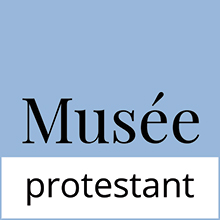The Reformation in 3 minutes (video)
In 16th-century Europe, a group of people criticised the Catholic Church – they were called Protestants – and created a different church, called the “Reformed” church. Hence the expression “Protestant Reformation”. How did this movement come about?
In the 14th century, Europe was plunged into anguish. Wars, epidemics, starvation, made people afraid of the ‘Final Judgement’, and of the Holy Wrath they felt impending.
The all-powerful Catholic Church resorted to drastic measures to calm the terror of the faithful. It sold indulgences. At the tinkling sound of the money dropping into the box the faithful received an indulgence granting you God’s favour, access to salvation and to Paradise…and funded Saint Peter’s basilica in Rome at the same time. But not everyone liked this practice.
A German monk, Martin Luther, published his 95 theses in the peaceful city of Wittenberg on 31 October, 1517. In them he denounced the trade in indulgence and claimed that, according to the Bible, that God’s favour and forgiveness were not obtained through money or charity, but through God’s Grace alone, acquired through the person of Jesus-Christ.
Sola Fide, Sola Gratia, Sola Scriptura: Faith Alone, Grace Alone, Scripture Alone.
His ideas spread like wildfire thanks to the printing press. The Catholic Church does not like this, as they feel criticized. She orders Luther to renounce his ideas which she considers heretical. Luther refuses. He is excommunicated.
Neither did Charles V, emperor since 1519, who saw his Holy Roman Empire divided between the princes who supported Luther and those loyal to Catholicism. He asks her to renounce. Luther refuses.
It is hidden by Frederick the Wise in the castle of Wartburg. It is in this castle that Luther translates the Bible into German. Soon, it will also be broadcast in other languages, making it accessible to more people. Other currents developed at the same time or following Luther’s Reformation: Anglicans, Presbyterians, Calvinists, etc.
Thanks to printing, his ideas spread like wildfire. The Catholic Church felt criticised and did not like that much. It ordered Luther to forego his ideas deemed heretic. Luther refused and was excommunicated. The Emperor Charles V, since 1519, was not pleased either as his Holy Roman Germanic Empire was divided, some princes siding with Luther and some faithful to Catholicism.
The Emperor asked Luther to recant, but he refused. He was then hidden by Frederic the Wise in Wartburg castle. There he translated the Bible into German. Shortly after, it was circulated in other languages and was thus made available to far more people.
Other currents developed at the same time, following Luther’s Reformation. Anglicans, Presbyterians, Calvinists, etc.
New models of churches are thus established, detached from the Catholic model and were centered on the Bible and its study.
All this weakened the political and religious power of the Catholic Church. It condemned the new practices and launched a ‘counter-reformation’ to try and restore its influence by creating the Jesuits and developing Baroque art.
As a result, Europe was split between those supporting the Reformation called ‘Protestants’, from 1529, and those who remained true to the Catholic Church and the Pope.
It marked the beginning of a new era of wars and persecutions…
A video produced as part of Protestants 2017.
Producing and editing : Émeline Ferron
Production : Fondation Bersier
Exo-vidéo "La Réforme en 3 minutes"
Découvrez également l’exo-vidéo à partir de cette vidéo :
